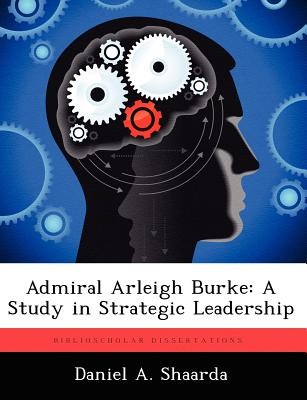
- We will send in 10–14 business days.
- Author: Daniel A Shaarda
- Publisher: BiblioScholar
- ISBN-10: 1249403596
- ISBN-13: 9781249403593
- Format: 18.9 x 24.6 x 0.5 cm, softcover
- Language: English
- SAVE -10% with code: EXTRA
Reviews
Description
In a surprise move during the summer of 1955 the Secretary of the Navy selected Rear Admiral Arleigh Burke over 92 more senior admirals to become the Navy's next Chief of Naval Operations. The junior admiral went on to serve an unprecedented three terms as the Navy's principal leader, a record yet to be broken. With no formal leadership instruction aside from his Naval Academy days and abbreviated experience at the senior operational level, Burke nonetheless became a prolific strategic level leader. At the height of the Cold War Burke led the Navy through a transition in technology, moving from an era of bullets and propellers to one of guided missiles and jets. Under his watch nuclear propulsion became the standard for all US submarines while the Navy greatly enhanced its contribution to the nation's strategic nuclear capability with nuclear missile submarines. In driving these transitions Burke left his mark on Navy culture and morale, shaking the service out of the doldrums and reinvigorating it. Today's military leaders are required to deal with a large degree of ambiguity. Understanding how previous leaders dealt with complex issues may help current and future leaders understand how to deal with difficult issues effectively. It may also help leaders understand circumstances as they exist today by examining the visions and decisions of strategic leaders in the past.
EXTRA 10 % discount with code: EXTRA
The promotion ends in 13d.13:19:23
The discount code is valid when purchasing from 10 €. Discounts do not stack.
- Author: Daniel A Shaarda
- Publisher: BiblioScholar
- ISBN-10: 1249403596
- ISBN-13: 9781249403593
- Format: 18.9 x 24.6 x 0.5 cm, softcover
- Language: English English
In a surprise move during the summer of 1955 the Secretary of the Navy selected Rear Admiral Arleigh Burke over 92 more senior admirals to become the Navy's next Chief of Naval Operations. The junior admiral went on to serve an unprecedented three terms as the Navy's principal leader, a record yet to be broken. With no formal leadership instruction aside from his Naval Academy days and abbreviated experience at the senior operational level, Burke nonetheless became a prolific strategic level leader. At the height of the Cold War Burke led the Navy through a transition in technology, moving from an era of bullets and propellers to one of guided missiles and jets. Under his watch nuclear propulsion became the standard for all US submarines while the Navy greatly enhanced its contribution to the nation's strategic nuclear capability with nuclear missile submarines. In driving these transitions Burke left his mark on Navy culture and morale, shaking the service out of the doldrums and reinvigorating it. Today's military leaders are required to deal with a large degree of ambiguity. Understanding how previous leaders dealt with complex issues may help current and future leaders understand how to deal with difficult issues effectively. It may also help leaders understand circumstances as they exist today by examining the visions and decisions of strategic leaders in the past.


Reviews